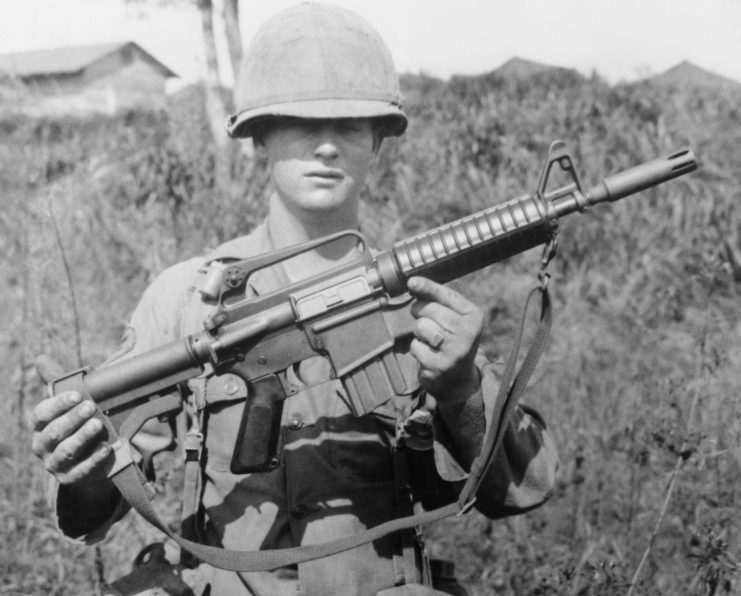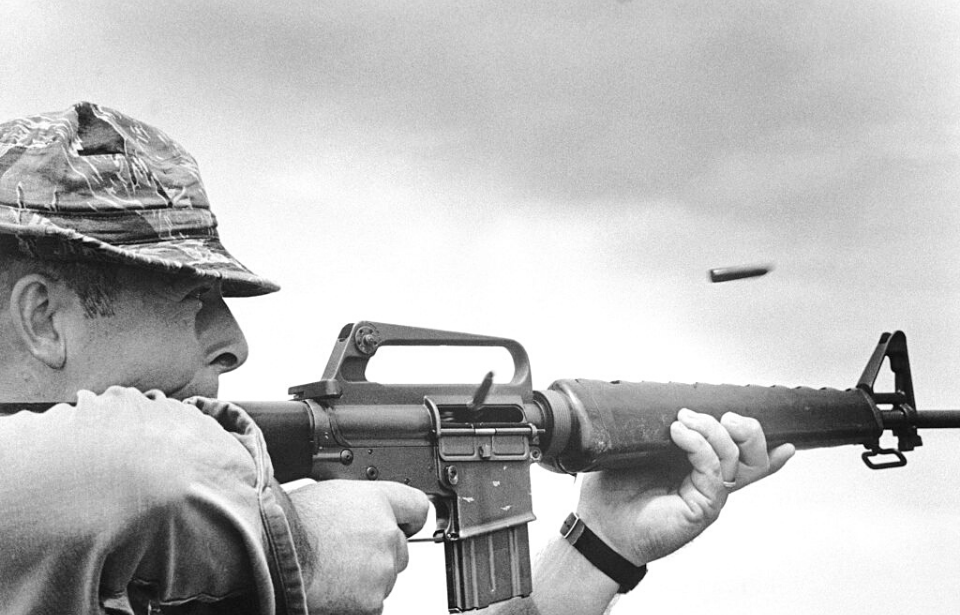Adoption of the M16 rifle in Vietnam
In 1966, Gen. William Westmoreland, Commander of the US Forces in Vietnam, introduced the M16 rifle as the new standard-issue infantry rifle, replacing its predecessor, the M14. Developed by engineer Eugene Stoner in the late 1950s, it was favored for its accuracy, light weight and the amount of fire it provided.

American troops in Vietnam were given a modified version of the M16, variant XM16E1. The weapon’s adoption was largely in response to the high number of casualties resulting from the enemy’s use of AK-47s. However, controversy surrounding the efficacy of the M16 prevented it from being issued to troops stationed in Europe and the US.
The M16 rifle jammed… A lot
The first versions of the M16 rifles had serious problems. One common issue was a “failure to extract,” which caused the gun to jam during combat. Often, the empty cartridge would get stuck in the chamber after firing. In modern warfare, the M16 sometimes worked more like an old-fashioned single-shot musket.

The only way soldiers could reliably fix the problem was by using a metal rod inserted through the barrel to remove the stuck cartridge.
The M16 was still seen as more effective than the M14
It was later found that the jamming problem was caused by switching to ball powder, which was meant to boost the muzzle velocity to 3,250 feet per second.

Even with these problems, the M16 was still seen as better than the M14. In fact, the US Army even called it the best rifle for combat in Vietnam. To fix the issues, they improved training, adjusted the gunpowder formula, and made sure cleaning kits were widely available—but not before a Congressional report brought attention to the problems.
A harrowing report is released
In 1967, nearly 80 percent of the 1,585 soldiers surveyed reported having stoppage issues with the M16 rifle during combat. Many of these soldiers wrote letters to their families, voicing concerns about the weapon’s reliability. In response, their families sent these letters to members of Congress, bringing the issue to the attention of the House Armed Services Committee.

This approach worked, leading to the formation of a Congressional Subcommittee to investigate the M16. After a detailed review, the committee’s report confirmed the soldiers’ complaints. It found that the Army had failed to provide proper training on the new rifle, did not ensure the ammunition was compatible, and neglected to supply enough cleaning kits to prevent jamming.
Despite these findings, the military continued issuing the M16 to soldiers. As reliability problems persisted, many service members in Vietnam lost trust in the weapon and began looking for alternatives.
Picking up the AK-47
The AK-47s used by the People’s Army of Vietnam (NVA) and the Viet Cong quickly became the alternative many U.S. troops were looking for. After China obtained the weapon’s technical specifications in the mid-1950s, it began mass-producing its own version—the Type 56, also known as the AK-56. This variant was slightly shorter and lighter than the original AK-47 and could be fired either automatically or one shot at a time.
Most importantly, the rifle was known for being extremely reliable and tough. It was easy to use, and soldiers could learn how to operate it in just a few hours.

For many American troops, picking up the enemy’s weapon became a practical, life-saving choice. The AK-47 was seen as more dependable in combat than the early M16, and using it was better than risking malfunction during a firefight. As a result, an underground market developed among U.S. soldiers to get their hands on the AK-47. Meanwhile, the Army continued to promote the M16, insisting that most problems came from improper maintenance rather than flaws in the weapon itself.
